Elgin bound: There's more than barbecue and bricks in this Texas town
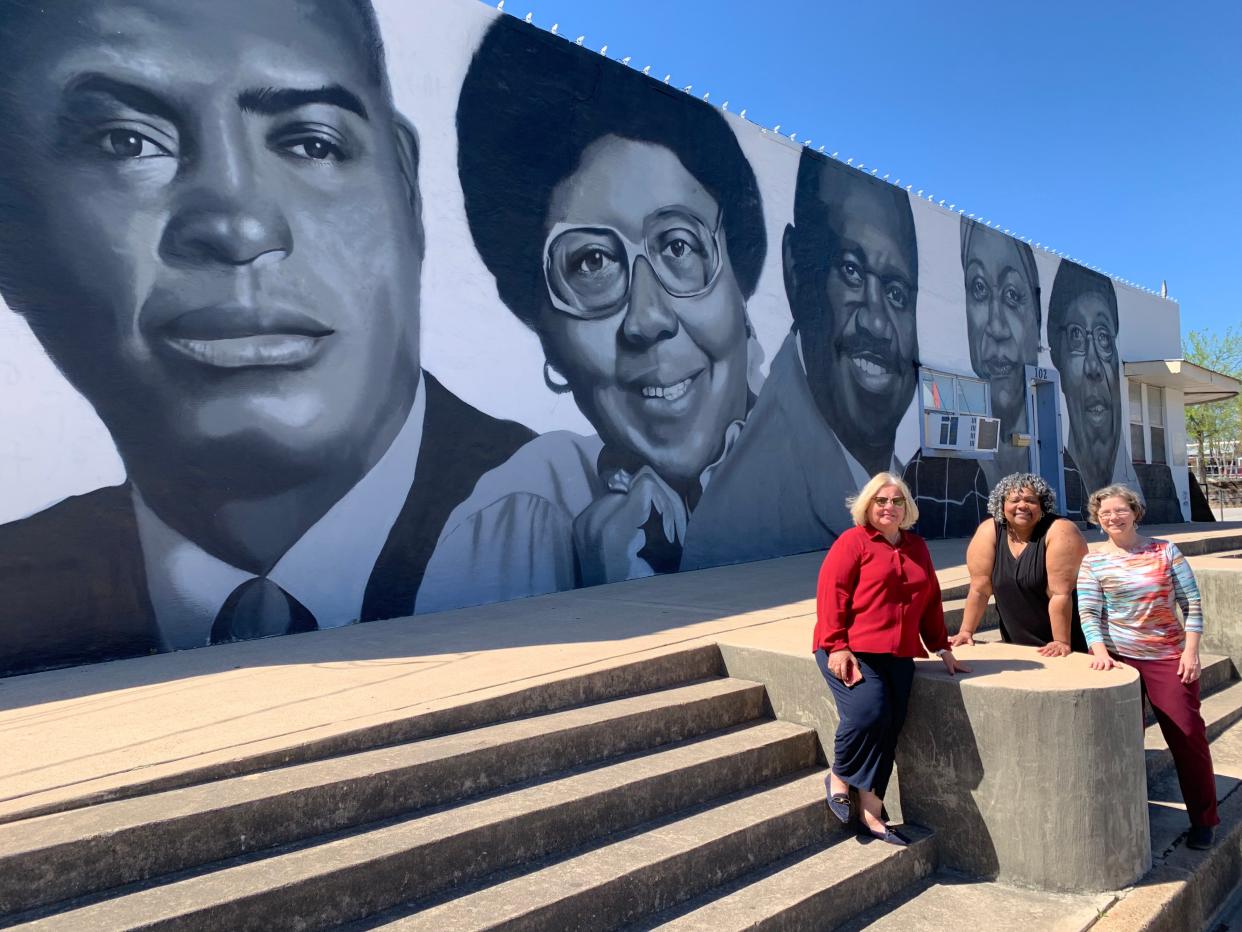
ELGIN — You encounter them in every small Texas town.
The miracle workers.
The public citizens who attract new businesses and residents while preserving the historic character of the town.
In this state, these tireless civic leaders often team up with programs such as Texas Main Street, a project of the Texas Historical Commission, which over the course of 40 years has helped revitalize 183 historic Texas downtowns.
Recently, I met with three such miracle workers in Elgin, a bustling and well-preserved town about 25 miles east of Austin that recently celebrated its sesquicentennial.
Around a table at the back of Lucy's Kitchen, an unfussy café in downtown Elgin, sat Theresa McShan, the town's first Black mayor, Amy Miller, the community services director, and Donna Snowden, a longtime school teacher, local historian and former Bastrop County commissioner.
Right away — before we mapped out 10 things that every curious visitor, including myself, should do in Elgin — one glaring fact about this community reared its ugly head.
"I can't get used to going around the block to park," Snowden joked as we sit down. "It's kind of irritating."
1. Where to eat in Elgin (I hope you like meat)
The first order of business when I arrive in a Texas community during a day trip or an overnight road trip: Where am I going to eat?
In Elgin, the answer begins — but does not end — with barbecue. A required stop on any Central Texas smoked-meat pilgrimage, this town is home to two large, storied joints: Southside Market & BBQ (1212 U.S. 290) and Meyer's Elgin Smokehouse BBQ (188 U.S. 290).
More: Burnet bound: A spooky jail, a Texas fort and vanished Mormon mills await in this county seat
Even if you haven't stopped by either shrine, you've probably spotted their rival sausages in the meat market of your local grocery store. I chose Meyer's on this trip for the pulled pork and garlic pork sausages. I was not disappointed.
My trio of Elgin miracle workers lobbied for other spots that I might try on future visits, including: Jackson Soul (313 N. Main St.) for pork chops, greens, okra gumbo and meat loaf; Taquería Azteca De Oro (404 S. Main St.) for breakfast, lunch or dinner, especially the gorditas; Joseph's Steak House (199 U.S. 290) for the highly rated crab cakes; and of course Lucy's Kitchen (106 Depot St.) for basic diner fare.
Snowden: "These kinds of restaurants are disappearing."
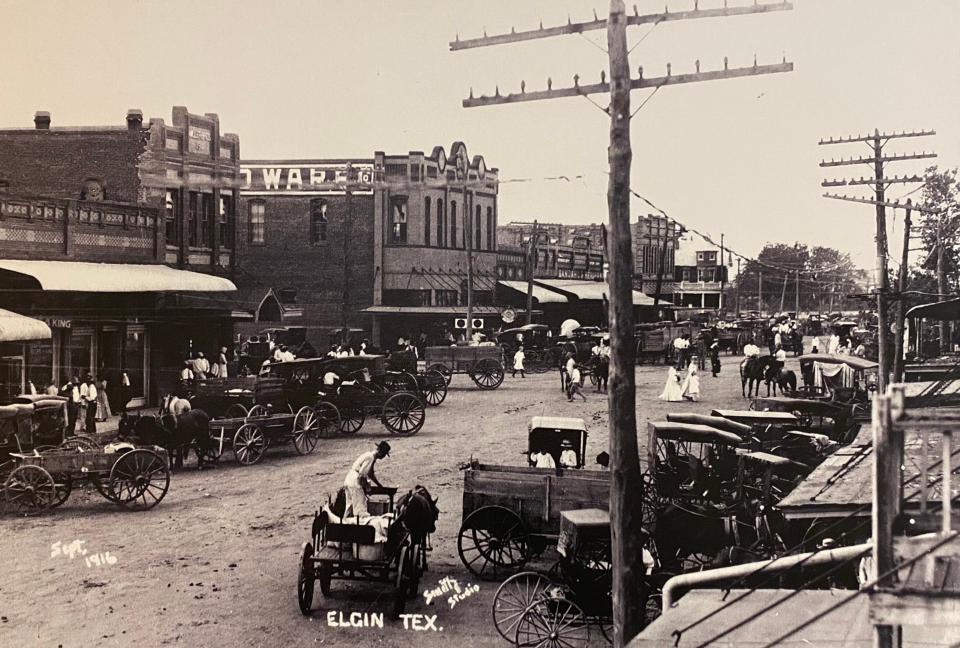
2. Would you like beer with that?
One highly anticipated Elgin enterprise was not quite ready to open during my visit.
The Circle Brewing Co. Farm, located on 23 acres just north of the Mary Christian Burleson Homestead, is the latest project from an Austin-based company.
Since 2010, founders Ben Sabel and Judson Mulherin been brewing and serving from their Circle Brewing Co. spot at 2340 W. Braker Lane.
The elegantly arced Elgin brewery, taproom and beer garden, along with a nature trail, will eventually be joined by a farm. It is expected to open in May.
"We have always sought to create the very best beer using only the main four brewing ingredients: water, malt, hops and yeast,” Sabel told the American-Statesman in 2019. "Our new facility in Elgin will enable us to take that one step further by allowing us to not only grow our ingredients, but truly incorporate our brewing operations with sustainable agriculture techniques."
3. Those famous Elgin bricks
You knew about the Elgin sausages, but did you know about the Elgin bricks?
While the town sits on the edge of the fertile Blackland prairie, it also benefits from rich seams of sandy, red clay, perfect for bricks. Michael Butler, who started two brickyards in Austin, founded a family business in Elgin that evolved into Elgin Butler Brick Company (365 FM 696).
Not only that, two other brickyards thrived: Acme Brick (1776 Old McDade Road) and Payne Brick Company, now known as Red River Brick (506 U.S. 290).
More: Pioneering history: In Marble Falls, tales of a legendary mayor, a museum and those pies
"Brick-making is huge," said Snowden, whose husband worked at Butler Brickyard in his teenage years in the summer. "It was very labor intensive back then. You had to stack them and haul them in a wheelbarrow. Now it's mostly automated."
Acme actually built a little company town with a 9-hole golf course near its factory. Local boys got so good at swinging their clubs there, they won two state tournaments, without the benefit of a coach.
There's no standard tour of the brickyards, but you can learn more about the historic businesses at the Elgin Depot Museum (14 Depot St.), a short walk from Lucy's Kitchen.
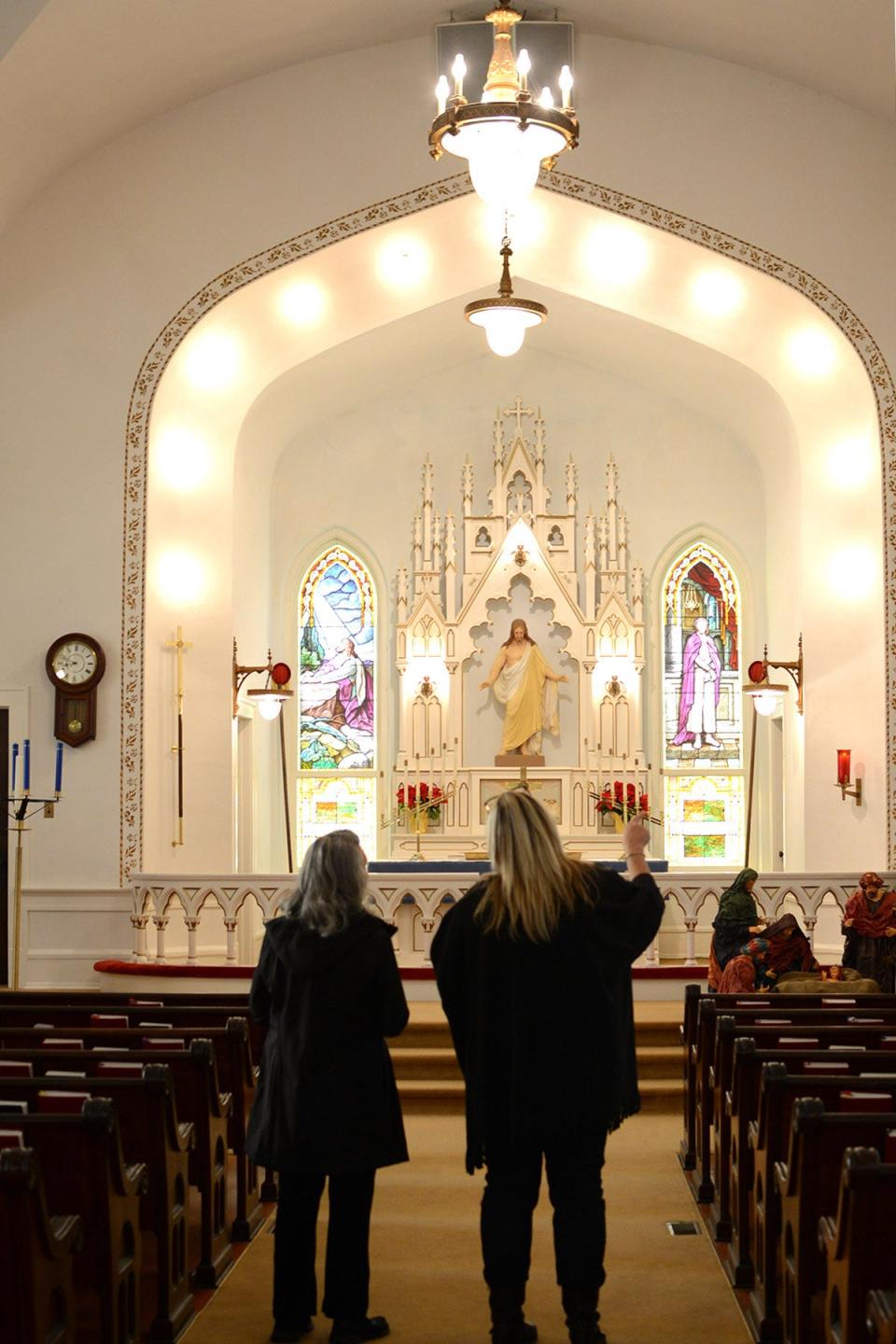
4. A respect for historic churches
Elgin's origins can be traced to a stagecoach stop that served the nearby communities around Perryville, Young's Settlement and Hogeye. Dignitaries recently dedicated a new historical marker at the original Hogeye site, now a Christmas tree farm. The faithful in these informal settlements — along with other residents — moved to the site of Houston & Texas Central depot in Elgin in the early 1870s.
Some Elgin churches, such as Mt. Pleasant Missionary Baptist Church (390 Texas 95), which McShan attends, occupy former barracks from the World War II-era Camp Swift. The military base was assembled "overnight" in 1942 and disassembled just as quickly in 1945; other structures were redeployed as local schools and businesses.
Snowden was raised Baptist, but she ended up worshipping with the Lutheran side of her family. That means she attends the New Sweden Evangelical Swedish Lutheran Church (12809 New Sweden Church Road), an exquisite church out in the country with a tall steeple that has been featured in movies and commercials. It's a gem.
5. They liked the name Hogeye anyway
The Hogeye Festival, set for the fourth Saturday in October, does not take place in historical Hogeye but rather in downtown Elgin, where many from the older communities moved.
Fourteen African-American families from Hogeye moved instead in 1872 to St. John Colony on the Bastrop-Caldwell county line because they were being terrorized by the Ku Klux Klan. There are fine exhibits on such area freedom colonies at the Bastrop County African American Cultural Center and the Bastrop County Historical Museum.
More: Visit a train depot and a saloon in a small town that might not stay small for long
Still, area residents were not done with the name. Miller, who came to town as a Main Street Texas manager in 1996 and stayed to protect and promote Elgin, is not shy about repeating the Hogeye Fest's decidedly superlative slogan: "The most fun you'll ever have."
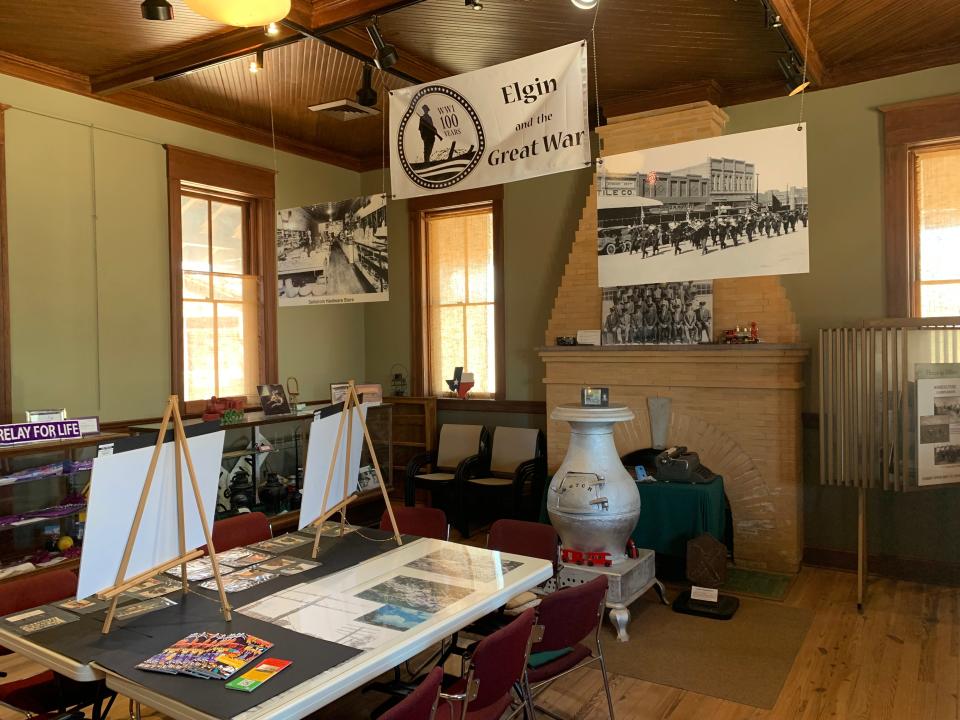
6. The train that changed everything
Elgin owes its location to the railroad.
Since the 1850s, Bastrop County residents had desperately attempted to attract a transformative rail line. In 1871, the Houston and Texas Central was pushing from Brenham on its way to Austin. It created boom towns in McDade, Elgin — named for Robert Morris Elgin, H&TC's land commissioner — and, later, Paige, along a line now owned by Austin Metro.
At one point, the tracks were supposed to head to Bastrop and Webberville instead of Elgin to follow the Colorado River into Austin. An 1869 flood made the banks of the river too unstable.
More: Texas History: Taking the long view from Monument Hill
Elgin's gain: Surveyor Theo Kesse planned the standard one-square mile town around the tracks, which in 1872 became Elgin.
Unlike Smithville, Elgin didn't build a roundhouse, as far as my experts knew. It did earn a "Union Depot" because another line, the north-south MKT, intersected with the original east-west tracks H&TC in 1886.
(The books to read are "Bastrop County During Reconstruction" by Kenneth Kesselus and the sesquicentennial volume, "Milestones: Elgin, Texas History" by Sydna Davis Arbuckle.)
7. Austin sprawl is creeping toward Elgin
"Austin was always the big city for us," McShan said of her youthful days. "We did a lot of things in Austin. But now the traffic's so bad."
In fact, Austin sprawl is creeping up to the boundaries of Elgin, (pop. 11,000), which is still comes as a shock to locals.
McShan attended the segregated Booker T. Washington School, but by 1967, teachers and students had integrated Elgin schools.
More: On the West Texas road again: 10 must-see spots to visit in historic San Angelo
"At that time, the big football rival was Bastrop," McShan said.
"When I was growing up in the early '60s, the river was Taylor," Snowden said of the cotton rail depot town to the north. "Now, it's Manor."
There are sharper distinctions.
"Bastrop and Smithville had the river," Miller said of other sizable towns in the area. "We had a lot of farming and still do. We've got cotton, maize, hay and wheat. And Coyote Creek Farms produces 'Jeremiah Cunningham's World's Best Eggs.'"
According to a display at the Elgin Depot Museum, other local crops have included cantaloupes, peanuts, yams, strawberries and pine lumber.
All the nearby towns share certain attributes, but my Elgin trio says the similarities end soon enough.
"We're all in our own little worlds," Snowden said. "They have no idea what's going on in Elgin."
That's why they emphasize a visit to the Depot Museum and, within the coming weeks, a new local history display and time capsule in the Library Plaza (404 N. Main St.).
Miller: "If you have been to one town, you have not been to the others."
8. 'Black Icons Mural' honors leaders
During the past few decades — I can't put my finger on the start date — Texas towns started embracing murals with renewed vigor. One of the best sets of civic murals is in downtown Brenham, 65 miles east of Elgin.
An outstanding Elgin example, rendered in gray tones, is the "Black Icons Mural" finished in late 2022 by artist Jeremy Biggers with Stem and Thorn. It catches the eye as you enter downtown via Main Street at 50 feet long and 20 feet high along a brick building located in the historically segregated south side of the tracks.
More: Here are 10 reasons why Corpus Christi is the most promising city in Texas
Depicted are musician Monty Joe Thomas — there's an exhibit about him at the Depot Museum — teacher Annie Lee Haywood and civil rights leader Harvey Westbrook as well as community and business leaders Dorothy McCarther and S.H. McShan, the mayor's father.
9. The artists arrived early
I hold onto a dim memory from the late 1980s or early '90s of visiting an Austin artist who had moved to one of the spacious brick building in downtown Elgin.
It's the old story: Real estate was cheap. Large structures with character were empty. Artists arrived with an eye for possibilities and plenty of design and building skills.
Accomplished artists such as Margo Sawyer, Margie Crisp, Bill Cunningham, Karen Bernstein and Sydney Yeager — who leases the old Bassist Opera House — were among those to turn Elgin's great historic structures into studios, galleries and gathering places.
More: When you go to Waco, and you should, visit these 10 tourist hotspots
A more recent arrival is Maggie Perkins, a writer, photographer and food expert who has contributed articles to the American-Statesman. (She commented on social media that I just missed her during my Elgin visit.)
And speaking of art, check out "Texas Farm," the 1940 mural by Julius Woeltz at the Elgin Post Office (21 N. Avenue C). Read more about these stylized wonders across the state in "The Texas Post Office Murals: Art for the People" by Philip Parisi.
"We have a quiet but thriving artistic community," Miller said. "Property is more expensive now, but we are still supporting them as a cultural investment."
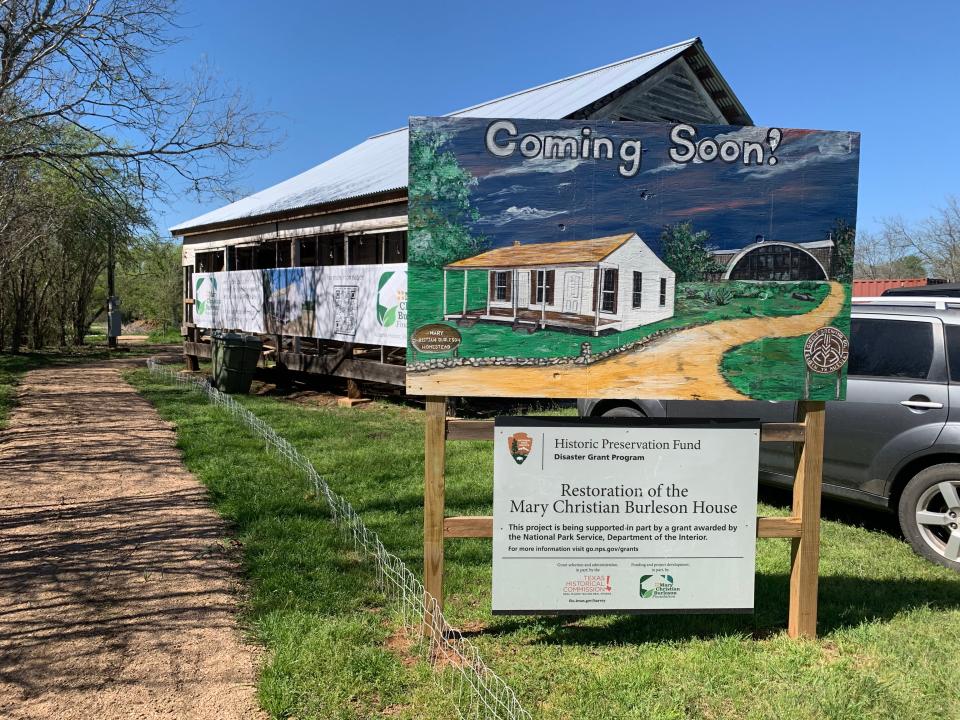
10. The oldest structure in Elgin
Talk about a little historical miracle: Discover an abandoned house, parts of which date back to the 1840s, then help to organize a charitable group to fix it up.
The Mary Christian Burleson Homestead (located at Louise and Lexington streets) was home to a trailblazer who married two famed pioneers, Thomas Christian and James Burleson.
"She was a brave widow twice," Snowden said. "She was around when Comanches showed up. She was involved in the Runaway Scrape during the Texas Revolution and fled to Bastrop."
More: Visiting shrines, missions, presidios, vaults and other hallowed places in South Texas
The oldest part of the house was made of logs, but there are several rooms constructed of sawn lumber. Jake Carter, who is helping to stabilize and renovate the place, showed us around the interior rooms, which are still in poor condition. In the first room stood two ancient, decaying pianos. Very "Grey Gardens."
Snowden had happened on the creaky house after reading about it in a book about the town's 1972 town centennial.
"Everyone had driven by the house and didn't realize its historical importance," Snowden said. "The house was overgrown and hidden from view."
Michael Barnes writes about the people, places, culture and history of Austin and Texas. He can be reached at mbarnes@gannett.com. Subscribe to the free weekly digital newsletter, Think, Texas, at statesman.com/newsletter or at the newsletter page of your USA Today Network newspaper.
This article originally appeared on Austin American-Statesman: Elgin TX has barbecue, bricks, history and a craft brewery on the way

